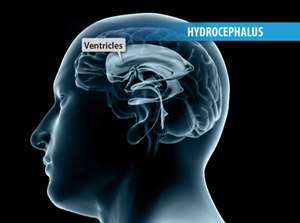Ventriculo-Peritoneal Shunt (VP Shunt) Insertion
Information about Surgery for Hydrocephalus
 |
Hydrocephalus is a condition that develops when excess cerebrospinal fluid builds up within the ventricles of the brain. Sometimes hydrocephalus is treated by insertion of a VP shunt to drain the excess brain fluid (CSF) from the brain to the abdomen. During this surgical procedure, a small drainage tube is implanted. The tube is beneath the skin and is not visible.
For more information about insertion of VP shunt watch the video below. |
Risks of Surgery to Insert a VP Shunt
Most operations for hydrocephalus can be performed safely without any complications. However, like any surgical procedure there are risks associated with both the anaesthetic and the procedure itself.
Risks of Anaesthesia
Risks of anaesthesia will be discussed with you by your anaesthetist prior to surgery. It is important that you inform us of your correct age and any past medical problems, as this can influence the risk of anaesthesia. Risks include:
- Heart problems, such as heart attack (AMI) or arrhythmia
- Lung problems, such as infection (pneumonia) or blood clots
- Urinary tract infection
- Deep Venous Thrombosis (DVT)
- Eye or visual problems
- Pressure wounds
- Stroke
- Small risk of significant life-threatening event
General Risks of Cranial Surgery
Although surgery for insertion of a VP shunt is generally safe, there are some risks whenever performing an operation on the brain These include:
- Infection 1-2%
- Seizures which can require taking medication. Rarely this can lead to epilepsy requiring longterm medication.
- Bleeding. This can occur at the time of surgery and may necessitate a blood transfusion. It can also occur at some time after surgery. The bleeding may be present in the brain or adjacent to it. Sometimes another operation is required to drain the bloodclot and stop the bleeding.
- Stroke
- Brain fluid leak (CSF leak)
- Small risk of significant neurological injury causing paralysis, coma or death.
Specific Risks of VP Shunt
The specific risks will be discussed in detail prior to your surgery but may include:
- Blockage of the shunt
- Shunt malfunction or breakage
- Incorrect shunt position
- Weakness or numbness in the limbs
- Balance or gait problems
- Paralysis (stroke like symptoms)
- Speech problems
- Visual problems
- CSF leak and collection under the wound
- Persistant symptoms
- Headaches no better
- Recurrence of symptoms
- Lung, liver or abdominal injury
